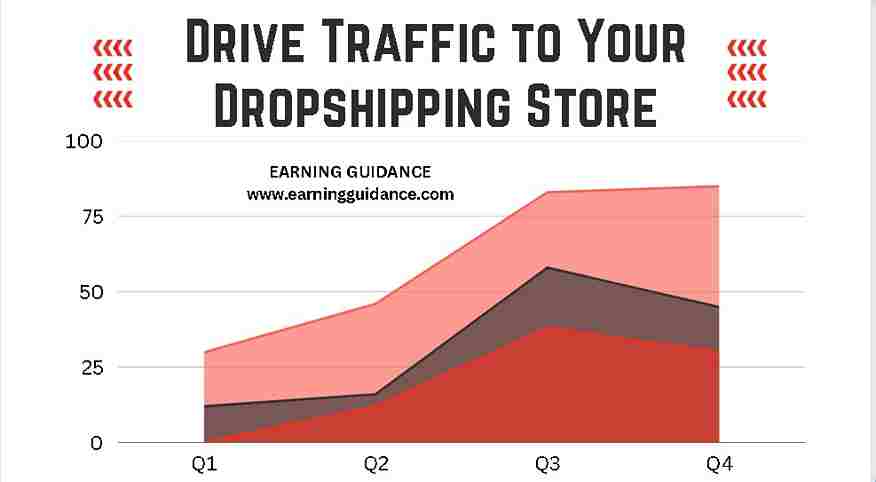Table Of Contents
- 1 Start a Profitable Dropshipping Business from Scratch
- 1.1 I. Introduction (Approximately 200 words)
- 1.2 II. Understanding Dropshipping (Approximately 200 words)
- 1.3 III. Choosing a Profitable Niche (Approximately 300 words)
- 1.4 IV. Finding Reliable Suppliers (Approximately 300 words)
- 1.5 V. Setting Up Your Online Store (Approximately 300 words)
- 1.6 VI. Sourcing and Adding Products (Approximately 300 words)
- 1.7 VII. Marketing and Promoting Your Store (Approximately 300 words)
- 1.8 VIII. Managing Orders and Customer Service (Approximately 300 words)
- 1.9 IX. Analyzing and Optimizing Your Business (Approximately 200 words)
- 1.10 X. Legal and Financial Considerations (Approximately 200 words)
- 1.11 XI. FAQ (Approximately 300 words)
- 1.12 XII. Conclusion (Approximately 200 words)
Start a Profitable Dropshipping Business from Scratch
I. Introduction (Approximately 200 words)
Welcome to the world of dropshipping! If you’re looking for a lucrative business opportunity that requires minimal upfront investment, dropshipping is the answer. In this article, we’ll guide you through the process of starting a profitable dropshipping business from scratch. By leveraging the power of e-commerce and strategic partnerships with suppliers, you can build a successful online store without the need to hold inventory or manage complex logistics. Get ready to unlock the potential for financial freedom and flexible entrepreneurship with dropshipping.
10 Essential Dropshipping Tips for Beginners
II. Understanding Dropshipping (Approximately 200 words)
Dropshipping is a business model that allows you to sell products online without having to stock or ship them yourself. Instead, you partner with reliable suppliers who handle the inventory and fulfillment process on your behalf. Here are the key aspects of dropshipping:
- Business model: Dropshipping is a retail fulfillment method where you act as a middleman between the customers and the suppliers.
- Benefits and advantages: Dropshipping offers several advantages, including low startup costs, location independence, and flexible product selection.
- Misconceptions and challenges: While dropshipping has its perks, it’s important to address common misconceptions such as low-profit margins and intense competition. We’ll explore strategies to overcome these challenges later in the article.
For more details and a comprehensive guide to dropshipping, you can refer to Shopify’s Ultimate Guide to Dropshipping.
III. Choosing a Profitable Niche (Approximately 300 words)
Choosing the right niche is crucial for the success of your dropshipping business. Here’s what you need to consider:
- Importance of niche selection: Selecting a profitable niche is the foundation of your business. It allows you to target specific customer segments and stand out from the competition.
- Researching and identifying profitable niches: Use market research tools like Google Trends, Keyword Planner, and social media platforms to identify popular and trending niches.
- Assessing market demand, competition, and trends: Analyze the demand for products in your chosen niche, evaluate the level of competition, and identify emerging trends to capitalize on market opportunities.
IV. Finding Reliable Suppliers (Approximately 300 words)
Building a strong network of reliable suppliers is essential for a successful dropshipping business. Consider the following steps:
- Importance of trustworthy suppliers: Reliable suppliers ensure timely order fulfillment and high-quality products, leading to customer satisfaction and repeat business.
- Methods to find and vet reliable suppliers: Use supplier directories and online marketplaces like AliExpress, SaleHoo, and Worldwide Brands to find a wide range of suppliers. Read reviews and compare ratings to determine their credibility.
- Using supplier directories and platforms: Explore popular supplier directories such as Oberlo, Spocket, and Modalyst. These platforms connect you with pre-vetted suppliers and simplify the process of adding products to your store.
V. Setting Up Your Online Store (Approximately 300 words)
Creating a professional and user-friendly online store is crucial for attracting customers and driving sales. Consider the following steps:
- Choosing a domain name and hosting provider: Select a memorable and brandable domain name that reflects your niche and brand identity. Choose a reliable hosting provider that ensures fast and secure website performance.
- Selecting an e-commerce platform and theme: Choose an e-commerce platform that aligns with your business needs and offers dropshipping-friendly features. Customize your store’s appearance by selecting an attractive theme that complements your product offerings.
- Customizing your store and adding essential features: Create a visually appealing storefront by adding high-quality product images, well-crafted product descriptions, and clear navigation menus. Incorporate essential features such as secure payment gateways, customer reviews, and product filters.
The Ultimate Guide to Dropshipping: Everything You Need to Know
VI. Sourcing and Adding Products (Approximately 300 words)
Carefully selecting and adding products to your store is essential for attracting customers and driving sales. Follow these steps:
- Finding trending and profitable products to sell: Conduct market research to identify popular products and emerging trends. Utilize tools like Google Trends, Amazon Best Sellers, and social media platforms to spot product opportunities.
- Evaluating product quality and supplier reliability: Request product samples from your suppliers to ensure they meet your quality standards. Regularly communicate with suppliers to maintain a healthy and transparent business relationship.
- Adding products to your store and optimizing product pages: Create compelling product listings with enticing titles, informative descriptions, and high-resolution images. Optimize product pages for search engines by incorporating relevant keywords and meta tags.
For more insights on sourcing and adding products to your dropshipping store, you can refer to Oberlo’s guide on product sourcing.
VII. Marketing and Promoting Your Store (Approximately 300 words)
Effective marketing is essential for driving traffic and generating sales. Consider the following strategies:
- Developing a marketing strategy for your dropshipping business: Define your target audience, outline your unique selling propositions, and determine your marketing budget. Incorporate a mix of digital marketing channels, such as social media marketing, content marketing, email marketing, and influencer collaborations.
- Utilizing social media marketing and influencer collaborations: Leverage the power of social media platforms like Instagram, Facebook, Pinterest, and YouTube to showcase your products, engage with your audience, and drive traffic to your store. Collaborate with relevant influencers in your niche to expand your reach.
- Implementing SEO techniques and paid advertising campaigns: Optimize your website for search engines by incorporating relevant keywords, creating informative blog content, and acquiring backlinks. Consider running targeted Google Ads or Facebook Ads campaigns to increase brand awareness and drive conversions.
To learn more about dropshipping marketing strategies, you can refer to BigCommerce’s blog post on dropshipping marketing strategies.
VIII. Managing Orders and Customer Service (Approximately 300 words)
Efficiently managing orders and providing excellent customer service are crucial for customer satisfaction and repeat business. Consider the following:
- Handling order processing and fulfillment: Ensure smooth order processing by regularly syncing your store with your suppliers’ inventory. Automate the fulfillment process whenever possible to minimize errors and delays.
- Providing excellent customer service and managing inquiries: Promptly respond to customer inquiries and provide support through various channels like email, live chat, and social media. Be proactive in addressing customer concerns and resolving issues to maintain a positive brand image.
- Dealing with returns, refunds, and customer satisfaction: Establish clear policies and procedures for handling returns and refunds. Prioritize customer satisfaction by offering hassle-free return processes and resolving issues in a timely and satisfactory manner.
For more guidance on managing orders and providing exceptional customer service, you can refer to Zendesk’s Customer Service Guide.
IX. Analyzing and Optimizing Your Business (Approximately 200 words)
Regularly analyzing your business performance and making data-driven decisions are essential for growth and success. Consider the following steps:
- Tracking key metrics and analyzing performance: Monitor important metrics such as sales, conversion rate, customer acquisition cost, and customer lifetime value. Utilize analytics tools like Google Analytics to gain insights into customer behavior and website performance.
- Making data-driven decisions to optimize your business: Identify areas for improvement based on data analysis. Optimize your marketing strategies, product offerings, and customer experience to increase sales and profitability.
- Implementing strategies for growth and scalability: Continuously explore opportunities to expand your business, such as launching new product lines, entering new markets, or collaborating with complementary brands. Plan for scalability by streamlining operations and investing in automation tools where necessary.
Harnessing the Power of Social Media to Promote Your Blog
X. Legal and Financial Considerations (Approximately 200 words)
Understanding the legal and financial aspects of running a dropshipping business is crucial for long-term success. Consider the following:
- Understanding legal obligations and regulations: Familiarize yourself with local business laws, consumer protection regulations, and product compliance requirements. Ensure your business operates within the legal boundaries of your jurisdiction.
- Setting up business licenses and tax requirements: Consult with a legal professional or an accountant to determine the appropriate business structure and obtain necessary licenses and permits. Comply with tax regulations and establish proper bookkeeping practices.
- Managing finances, tracking expenses, and setting pricing strategies: Keep a close eye on your financials by accurately tracking your expenses, revenues, and profit margins. Set competitive and profitable pricing strategies that take into account your costs, market demand, and competition.
For more detailed information on the legal and financial considerations of running a dropshipping business, you can refer to Incfile’s guide on dropshipping legal and financial considerations.
XI. FAQ (Approximately 300 words)
Q1: How much money do I need to start a dropshipping business?
- Starting a dropshipping business requires minimal upfront investment compared to traditional retail models. You’ll need funds for essentials such as website hosting, domain registration, marketing campaigns, and inventory purchases. On average, a budget of $500 to $1,000 is recommended, but it can vary depending on your niche and business goals.
Q2: Do I need to hold inventory in a dropshipping business?
- No, one of the advantages of dropshipping is that you don’t need to hold inventory. The suppliers you partner with handle inventory storage and fulfillment. This allows you to focus on marketing, customer service, and growing your business without the burden of managing physical inventory.
Q3: How do I handle shipping and delivery in dropshipping?
- Shipping and delivery are handled by your suppliers. When a customer places an order on your online store, you forward the order details to the supplier who then ships the product directly to the customer’s address. Make sure to establish clear communication with your suppliers regarding shipping methods, delivery times, and any special requirements.
Q4: Is dropshipping a saturated market?
- While dropshipping has gained popularity in recent years, it’s important to note that there are still ample opportunities to succeed. By choosing a profitable niche, differentiating your brand, and implementing effective marketing strategies, you can carve out a successful dropshipping business in a competitive market.
Q5: How long does it take to start a profitable dropshipping business?
- The timeline for building a profitable dropshipping business varies based on several factors, including your prior experience, niche selection, marketing efforts, and dedication to learning and adaptation. Some entrepreneurs have achieved profitability within a few months, while others may take longer. It’s crucial to stay committed, continuously learn and adapt your strategies based on the market feedback.
Building a Strong Personal Brand Through Blogging
XII. Conclusion (Approximately 200 words)
Congratulations! You’ve reached the end of our comprehensive guide on starting a profitable dropshipping business from scratch. By following the steps outlined in this article, you are equipped with the knowledge and strategies to launch your own successful venture. Dropshipping offers a world of possibilities for financial independence, flexible entrepreneurship, and location freedom. Remember, success in dropshipping requires commitment, persistence, and continuous learning. Take action today, apply the insights you’ve gained, and embark on your journey to build a profitable dropshipping business.













One thought on “How to Start a Profitable Dropshipping Business from Scratch”